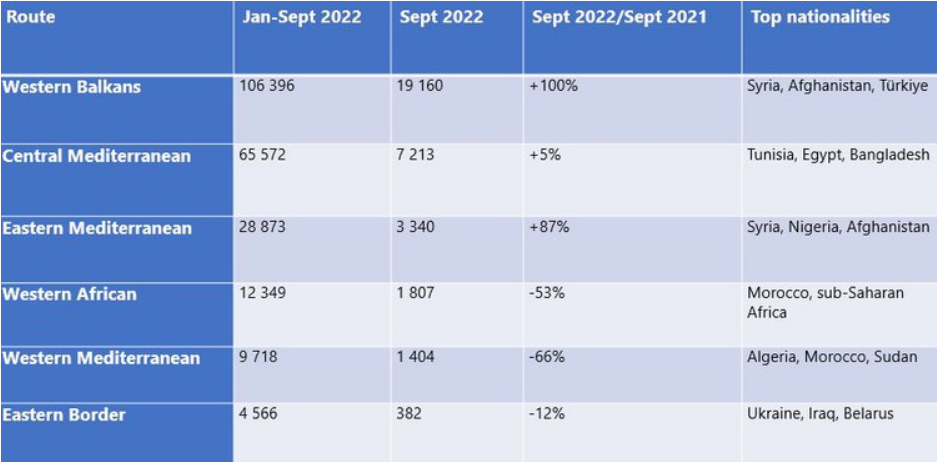By: V4 Agency
Serbia has registered 86 thousand migrants since the beginning of the year, at least according to official figures revealed by Serbia’s commissioner for migration. 1.5 million migrants have travelled on the Balkan route since 2015, Natasa Stanisavljevic highlighted. In its latest report, Frontex also found that in the period under review, authorities registered 70 per cent more illegal border crossing attempts at the EU’s external borders than last year
Migrants flock to border towns
Towns and villages along the Serbia-Hungary border have seen a massive wave of illegal immigrants arriving in recent months. With a touch of exaggeration, we see more migrants than local residents at midday in central Subotica, a town just a few kilometres from the Hungarian border. They are mostly young men strolling around in groups.
They go shopping in the stores or pick up money at Western Union. They exchange the euros they receive into dinars to cover their expenses.
The waiting taxis are lined up alongside the exchange booths. Almost an entire industry is based on the transportation of migrants, who are charged extra to be taken to the nearby woods that allows them to attempt a border crossing into the EU. They use ladders to scale the fence and if they fail, they will stay around the border area for several days.
Farmers in smaller settlements in the area have complained to V4NA that migrants marching en masse steal their crops, destroy their vegetable gardens, damage the buildings and move into abandoned homes. A resident of Backi Vinogradi (Kiralyhalom) told our news agency that locals no longer wake up to the sound of roosters, but to the rattling of firearms from the nearby woods. In the once peaceful village, only a few people will allow their children to go to school on their own, and the gates must be strictly locked.
Based on V4NA‘s first-hand experience, the settlements along the border have been literally inundated by migrants who refuse to live in reception centres. Instead, they set up camp in the nearby forest and try to cross over into the EU at all costs.
Travelling on the motorway near the Horgos-Roszke border-crossing point is far from safe. The long queues of lorries and truck drivers waiting around their vehicles is one source of danger, but migrants crossing the motorway in large groups is a distinctive other. They often run across the lanes in defiance of the rules, forcing motorists to swerve at speeds of 130 kilometres per hour, which is not always possible.
Authorities register twice as many migrants this year than during the fist 9 months of last year
This year’s numbers attest to a significant increase: authorities registered 43 thousand illegal migrants in the first nine months of 2021, compared to 86 thousand migrants that have been registered this year. The data, according to Serbia’s asylum commissioner, shows that nearly one and a half million migrants have passed through the Balkan route since 2015.
Serbia currently has 19 reception centers, but 4 are out of work and no longer necessary. Migrants tend to avoid these so long as the weather is good. They prefer spending the nights in forests and thickets to evade the authorities. The high commissioner underlined that most immigrants still identify as Syrians or Afghans.
“In the last two years, the pressure has diminished due to Covid, but this year we see a significant rise in the number of immigrants. In the first 9 months of the year, we registered 86,000 migrants in Serbia. They are the ones who agree to go to the reception centres. Last year, this number was 43,000, which is a growth of 100 per cent,” Stanisavljevic said.
Of the huge number of people who arrived so far, Serbia has only granted refugee status to 228 individuals, with authorities now considering 20 similar requests.
“That speaks to the fact that Serbia is not their final stop. They don’t want to stay here, Serbia is just a transit country for them,” the high commissioner emphasized.
Frontex also reports increased activity
Preliminary data shows that authorities have detected 228,240 illegal entries at the EU’s external borders in the first nine months of this year. This represents an increase of 70% compared to the same period last year and the highest number for the first three quarters of the year since 2016.

Photo: Screenshot
Frontex says that the Western Balkans is still the most active migration route into the EU. In September, 19,160 illegal entries took place on this section of the border, twice as many as last year. This is partly because there are many illegal migrants in this area, and they keep trying, repeatedly, Frontex adds.

